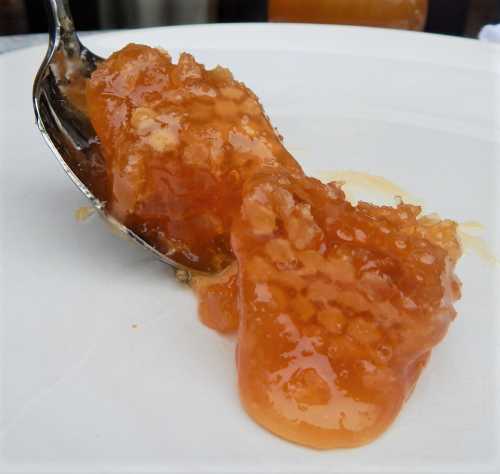Bee Boles
Bee boles are rows of recesses in walls. They were south-facing, and were used for sheltering skeps from the elements in Britain, before modern bee hives were invented in the 19th century.
Skeps were roundish- baskets constructed from straw, and having a lid. They are sometimes used today for capturing swarms.
IBRA, the International Bee Research Association, keeps records of bee boles discovered throughout the UK. The register, at the time of writing in July 2014, has 1567 bee bole sites registered.
Sites have been
recorded in varied locations, including the grounds of estates, farms,
inns and cottage gardens. The register was started by Dr Eva Crane, who
had an interest in traditional beekeeping structures.
The oldest surviving bee boles may date from the twelfth century, and examples have been recorded from every century after that.
Surviving bee boles are built in stone, brick or cob walls. Some had a padlocked metal bar to prevent theft. Theft could be a problem, as thieves would steal honey. For this reason, bee boles were usually kept close to the house.
The metal bar would also hold in place a wooden board across the front of the bole, to further protect the bees whilst they were overwintering.
There are a number of books available on the subject from various book sellers.
Example locations of bee boles include:
Mirehouse and Gardens, by Bassenthwaite Lake, Cumbria, England
Lost Gardens Of Heligan, Cornwall, England
Packwood House, Warwickshire, England
King’s Garden at Godolphin, Cornwall, England
Attingham Park, Atcham, Shropshire, England
Gainsborough Old Hall, Lincolnshire, England
Cathedral Close, Canterbury, Kent, England
Grey’s Court, Henley, Oxfordshire, England
Fulham Palace, London, England
The Queen’s Head, Timil, Lake District, England
The Donkey Sactuary, Devon, Elgland
Tayfield House, Fife, Scotland
Abergavenny Castle, Monmouthshire, Wales.
Did You Know?
Toxic Honey Was Used In Ancient Warfare!

If you found this page helpful or interesting, I'd really be grateful if you would share it with others - if not this page, perhaps another, such as Gardening For Bees.
Thank you so much :) .